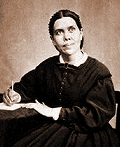|
As Paul recounted the works of Christ in healing the afflicted, he perceived
a cripple whose eyes were fastened upon him, and who received and
believed his words. Paul's heart went out in sympathy toward the afflicted
man, whose faith he discerned; and he eagerly grasped the hope that he
might be healed by that Saviour, who, although he had ascended to
Heaven, was still man's Friend and Physician, having more power even
than when he was upon earth.
In the presence of that idolatrous assembly, Paul commanded the cripple to
stand upright upon his feet.
Hitherto he had only been able to take a sitting
posture; but he now grasped with faith the words of Paul, and instantly
obeyed [p. 57] his command, and stood on his feet for the first time in his life.
Strength came with this effort of faith; and he who had been a cripple
walked and leaped as though he had
never experienced an infirmity.
|
On one of these occasions2 St. Paul observed
a cripple, who was
earnestly listening to his discourse. He was seated on the ground, for he
had an infirmity in his feet, and had never walked from the hour of his
birth. St. Paul looked at him attentively, with that remarkable expression
of the eye which we have already noticed (p. 134). The same Greek
word is used as when the Apostle is described as "earnestly beholding the
council," and as "setting his eyes on Elymas the sorcerer."3 On this
occasion that penetrating glance saw, by the power of the Divine Spirit,
into the very secrets of the cripple's soul. Paul perceived "that he had
faith to be saved."4 These words, implying so much of moral preparation
in the heart of this poor Heathen, rise above all that is told us of the lame
Jew, whom Peter, "fastening his eyes upon him with John," had once
healed at the temple gate in Jerusalem.5 In other respects the parallel
between the two cases is complete. As Peter said in the presence of the
Jews, "In the name of Jesus Christ of Nazareth, rise up and walk," so
Paul said before his idolatrous audience at Lystra,
"Stand upright on thy
feet." And in this case, also, the word which had been suggested to the
speaker by a supernatural intuition was followed by a supernatural result.
The obedient alacrity in the spirit, and the new strength in the body,
rushed together simultaneously. The lame man sprang up in the joyful
consciousness of a power he had never felt before, and walked like those
who had never had experience
of infirmity.
2 Acts xiv. 8, &c.
[3] Acts xxiii. 1, xiii. 9.
4 Acts xiv. 9. The word is the same as in xvi. 30.
5 Acts iii. Wetstein remarks on the greater faith manifested by the heathen at Lystra
than the Jew at Jerusalem.
|
And there sat a certain man at Lystra, impotent in his feet,
being a cripple from his mother’s womb, who never had walked:
The same heard Paul speak: who stedfastly beholding him,
and perceiving that he had faith to be healed,
Said with a loud voice, Stand upright on thy
feet. And he leaped and walked.
(Acts 14:8-10)
|


